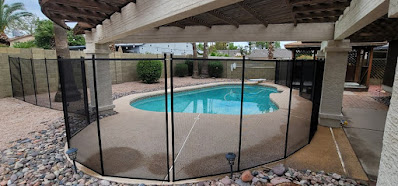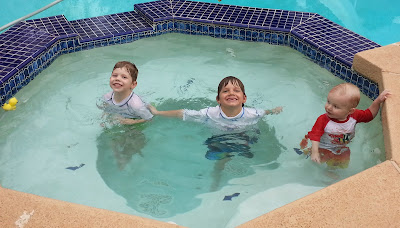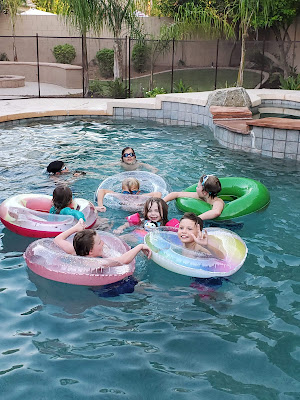Installing a mesh pool fence in March is a good idea for several reasons:
It is highly recommended to have a 5 foot pool fence (in some areas this is code) in order to provide an extra level of safety.
1) Summer preparation: March is a great time to start preparing for summer, and installing a mesh pool fence is a key part of pool safety. By installing the fence before the busy summer months, you can ensure that your pool is secure and ready for use when you need it.
2) Increased visibility: Mesh pool fences are designed to be see-through, which can help increase visibility and provide a better view of the pool and surrounding area.
3) Durability: Mesh pool fences are durable and can withstand the elements, making them a great choice for long-term pool safety. They are also easy to maintain, which can save you time and money in the long run.
Installing a mesh pool fence in March is a smart move for pool safety and peace of mind. With warmer temperatures, increased visibility, and durability, a mesh pool fence can help keep children and pets safe and secure while playing outside the pool area.
It is highly recommended to have a 5 foot pool fence (in some areas this is code) in order to provide an extra level of safety.
A 5ft mesh pool fence can be designed to complement the style of your home and landscaping, adding an attractive feature to your outdoor space while providing safety and security for your family.
Ultimately, the height of the pool fence should be determined by local regulations and the specific needs of the pool and its surrounding environment.
When it comes to water safety, it's important to take every precaution to ensure that children are safe and protected. One of the most important things you can do to protect your child while they're swimming is to make sure they are wearing a life jacket that is U.S. Coast Guard certified.
A life jacket that is U.S. Coast Guard certified is designed to meet strict safety standards and provide maximum protection in the water. Life jackets come in a variety of sizes and styles, so it's important to choose one that is appropriate for your child's weight and size.
Young children should wear a life jacket that will keep them up right. Children who are beginning to learn swimming skills can wear a puddle jumper.
In a pool setting, it can be easy to assume that children are safe and under constant supervision. However, accidents can happen in an instant and it's important to have a backup safety measure in case of an emergency. A life jacket can provide the necessary buoyancy and support to keep them afloat.
Stearns has U.S. Coast Guard certified life jackets and you can purchase them on Amazon. Click on one of the photos or one of the links below to purchase on Amazon.
It's important to note that inflatable toys, such as arm floats or inner tubes, should not be used in place of a life jacket. These toys are not designed to provide adequate support and can easily deflate or become detached from a child, putting them at risk.
In addition to ensuring that your child wears a life jacket, it's also important to keep a close eye on them while they're in the water. Children should always be supervised by an adult who is familiar with water safety and knows how to respond in case of an emergency.
By taking these precautions, you can help keep your child safe and protected while they enjoy the fun and excitement of swimming in a pool. Don't take any chances when it comes to water safety - always make sure your child is wearing a U.S. Coast Guard Certified life jacket and is under close supervision at all times.
As an Amazon Associate, Arizona Childproofers earns from qualifying purchases.
FOR MORE INFORMATION
Contact
ARIZONA CHILDPROOFERS
480-634-7366
Childproofing, Pool Fences, Car Seat Safety, Community Education

















No comments:
Post a Comment